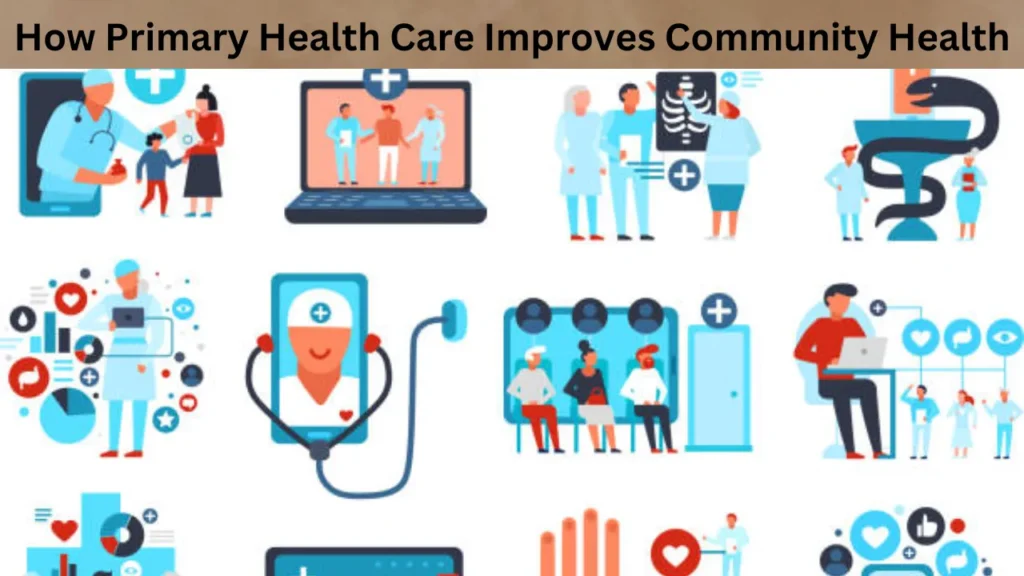Elements of Primary Health Care: A Healthy Foundation

Primary health care is the cornerstone of a robust healthcare system, emphasizing community involvement and accessible health services for everyone. It’s a comprehensive approach designed to address the most fundamental health needs of a population. By focusing on the elements of primary health care, this approach ensures equitable, accessible, and sustainable healthcare for all. Let’s dive deep into these elements to understand their significance and impact on communities worldwide.
What is Primary Health Care?
Primary health care (PHC) represents the first point of contact individuals have with the healthcare system. It provides holistic care, focusing on prevention, treatment, and health promotion. Its ultimate goal is to ensure health for all, particularly in underserved and rural areas, by addressing social, economic, and environmental determinants of health. The elements of primary health care form the foundation of this system, enabling it to deliver effective and equitable services.
Core Elements of Primary Health Care
To comprehend the breadth and depth of primary health care, we must explore its key components. These elements form an interconnected web that strengthens healthcare systems and enhances individual and community health outcomes.
1. Health Education and Awareness
One of the vital elements of primary health care is health education. Empowering communities with knowledge about common health problems and their prevention is essential. Awareness campaigns focus on hygiene, nutrition, family planning, and disease prevention, ensuring individuals can make informed decisions about their well-being.
2. Nutrition as a Pillar of Health
Proper nutrition plays a pivotal role in primary health care. Malnutrition, whether due to undernutrition or obesity, significantly affects overall health. Educating communities about balanced diets and providing access to nutritious food ensures that this element of primary health care addresses both immediate and long-term health challenges.
| Nutritional Issues | Health Impact | Solutions |
|---|---|---|
| Undernutrition | Weak immunity, stunted growth | Access to fortified foods |
| Overnutrition | Obesity, chronic diseases | Promoting healthy eating habits |
3. Access to Safe Water and Sanitation
Clean water and sanitation are non-negotiable for maintaining good health. This essential element of primary health care focuses on preventing waterborne diseases and promoting hygiene. Community initiatives often include building sanitation facilities and educating the population about the importance of clean water.
4. Maternal and Child Health Care
Maternal and child health services form another core component. These services ensure healthy pregnancies, safe deliveries, and the overall well-being of children. Immunizations, breastfeeding support, and family planning are integral to this element of primary health care.
5. Preventing Infectious Diseases
Immunization programs against diseases such as measles, polio, and tuberculosis demonstrate the effectiveness of this element. By targeting major infectious diseases, primary health care systems protect entire communities and improve life expectancy.
Why Are the Elements of Primary Health Care Important?
The elements of primary health care collectively contribute to building resilient health systems. They address the root causes of health issues, rather than merely treating symptoms. For instance, preventive measures like vaccinations and education reduce the burden on secondary and tertiary care facilities.
Moreover, these elements ensure health equity. Marginalized groups, including rural populations, benefit significantly from accessible health services. A strong focus on affordability and community participation further enhances the inclusiveness of primary health care systems.

How Primary Health Care Improves Community Health
Communities thrive when primary health care is effectively implemented. Education campaigns lead to healthier lifestyles, while access to safe water reduces disease outbreaks. Furthermore, essential drug availability ensures that common illnesses are treated promptly, reducing complications and improving quality of life.
| Health Outcome | Impact of PHC Elements |
|---|---|
| Reduced Infant Mortality | Maternal and child care |
| Disease Prevention | Immunizations and education |
| Enhanced Life Expectancy | Access to essential drugs |
Challenges in Implementing Primary Health Care
Despite its benefits, primary health care faces numerous challenges. Limited resources, particularly in low-income countries, hinder the effective implementation of its elements. Additionally, insufficient training for healthcare workers and a lack of community participation can undermine its success.
Governments and organizations must prioritize investments in primary health care infrastructure. Public-private partnerships can also play a critical role in overcoming these challenges. Strengthening the elements of primary health care through collaborative efforts ensures better outcomes for all.
How Poor Sanitation Leads to Public Health Crises
Poor sanitation is a critical issue that significantly impacts public health, particularly in low-income areas. Inadequate sanitation facilities lead to the contamination of drinking water sources with pathogens, increasing the spread of waterborne diseases such as cholera, diarrhea, and typhoid. Open defecation and improper waste disposal exacerbate these problems, creating breeding grounds for harmful bacteria and parasites. Poor sanitation also contributes to malnutrition, as recurrent infections hinder nutrient absorption in children. Public health crises caused by sanitation issues strain healthcare systems, diverting resources from other essential services. Addressing sanitation through infrastructure development, community education, and public policies is vital for preventing these crises and promoting healthier living environments.
Role of Government Policies in Strengthening PHC
Government policies play a pivotal role in the development and sustainability of primary health care (PHC). Policies determine the allocation of resources, the framework for service delivery, and the prioritization of health goals. Strong governance ensures equitable access to essential health services, particularly in rural and underserved areas. For instance, policies promoting universal health coverage (UHC) directly bolster PHC by ensuring that all individuals can afford basic health care. Furthermore, governments often establish regulatory standards for training community health workers, building infrastructure, and distributing essential medicines, all of which strengthen PHC systems. By investing in public health initiatives and integrating primary health care into national strategies, governments can address health inequities and improve overall health outcomes.
Also Read: The Power of Fandom: How Fan Communities Drive Pop Culture Success
Technological Innovations in Primary Health Care Delivery
Technology is revolutionizing how primary health care is delivered, making it more efficient, accessible, and patient-centered. Telemedicine, for instance, bridges the gap for populations in remote areas, allowing them to consult healthcare providers without traveling long distances. Mobile health (mHealth) apps provide real-time access to health education, reminders for vaccinations, and tools for monitoring chronic conditions.
Artificial intelligence (AI) and machine learning assist in early disease detection and personalized treatment plans. Additionally, electronic health records (EHRs) streamline patient data management, enhancing continuity of care. Wearable devices like fitness trackers empower individuals to monitor their own health, aligning with PHC’s emphasis on preventive care. These innovations not only improve access but also reduce costs, making primary health care more sustainable.
Also Read: Fashion and Lifestyle Tips from Ari Haagen
Why PHC Is Essential for Aging Populations
As populations age, primary health care becomes increasingly important in addressing their unique health needs. Older adults often face chronic conditions such as diabetes, hypertension, and arthritis, which require continuous management rather than acute care. PHC focuses on prevention, early detection, and ongoing treatment, making it ideal for this demographic. It provides accessible, community-based services that reduce the need for expensive hospital visits. Furthermore, PHC emphasizes a holistic approach, including mental health support and social services, which are critical for the well-being of elderly individuals. By promoting healthy aging through routine check-ups, lifestyle counseling, and immunizations, primary health care ensures that aging populations maintain a better quality of life.
Also Read: Deen Dayal Upadhyay Health Card Way to Affordable Healthcare
Impact of Health Education on Disease Prevention
Health education is a cornerstone of disease prevention and a key element of primary health care. By raising awareness about common health risks and prevention strategies, health education empowers individuals to make informed choices. For example, campaigns on handwashing, proper nutrition, and safe drinking water significantly reduce the prevalence of infectious diseases. Additionally, education about vaccinations ensures higher immunization rates, protecting communities from outbreaks. Chronic diseases such as diabetes and heart disease can also be mitigated through awareness programs that encourage healthy diets, regular exercise, and routine screenings. Health education not only reduces the burden on healthcare systems but also fosters a culture of proactive health management, creating healthier societies over the long term.
Also Read: Labsys Health Kerala Department of Health and Family Welfare
Conclusion
The elements of primary health care are essential for creating equitable, accessible, and sustainable health systems. From health education and nutrition to immunizations and maternal care, each component plays a vital role in improving community health. By addressing these elements holistically, primary health care empowers individuals and transforms societies. Investing in and strengthening these elements is not just a health priority but a commitment to building a healthier and more equitable world.
Also Read: Bestadvise4u.com Health: A Guide to Wellness






